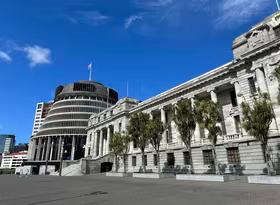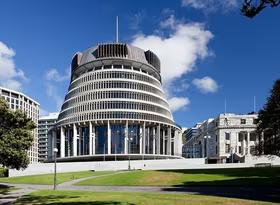Budget 2021: Spending boosted, but delivery will be closely watched
The 2021 Budget showed a much-improved economic outlook from the Treasury, but also further raised questions about the ability for the government to execute its ambitious policy agenda. Along the large spending commitments, and improvements in the government’s fiscal position were signs of some restraint.
A plethora of paper, ink, and keystrokes have been deployed to communicate and analyse Budget 2021. So, although this article will briefly review some key budget items, it will also focus on unpicking the Treasury’s latest forecasts and examining the government’s ability to deliver their spending commitments.
Benefit raises cause for relief, not elation
The $32-$55pw increase to main benefits was, in a sense, well signalled pre-Budget by both the lack of major spending announcement and the lack of action on supporting lower income New Zealanders in recent years. The government’s own Welfare Expert Advisory Group reported back in 2018 with recommendations for higher benefits – advice that took a long time to act on. The increases weren’t met with any elation that more support was on the way, but instead were met with relief that some help was finally on its way after vocal calls that went unheard for years.
The increase in benefits will provide a small overall increase in economic activity as the boost will increase private consumption. However, part of the increase will be eaten up by higher costs of living expected this year. Even more critically, the substantial increase in living costs means that there will little real movement in outcomes for low-income Kiwis.
Crude analysis by Infometrics shows that housing costs will be taking up an ever-increasing share of benefit support. Comparing weekly net Jobseeker Support benefit payments for a couple without children to average weekly rents shows a clear trend. Although comparing main benefit levels with rental costs ignores other forms of government support including the Accommodation Supplement, Chart 1 does demonstrate how rental increases have been larger than benefit increases in recent years.
On our crude measure, in April 2000 average weekly rent could take up 60% of the chosen weekly Jobseeker Support benefit. In April 2021, rent took up 91% of the available benefit.
Opening the books: more revenue, more spending, less debt
Upgraded forecasts show a much healthier set of government accounts. Better economic activity, job levels, and spending, is set to boost revenue. Treasury now forecasts that core Crown revenue will be 4.5% higher by 2025 than forecast at the Half Year Economic and Fiscal Update (HYEFU) 2020 update (see Chart 2).
With more money available, the government is also looking to increase its spending. Core Crown expenses are expected to be 2.0% higher than last forecast in December by 2025.
Better revenue outcomes and a less severe hit to the economy means that debt levels are set to be lower, with a return to surplus now in sight. Treasury projections show a possible return to surplus in 2027, compared to no projected surplus by even 2035 based on HYEFU figures from December 2020.
This overall combination means that net debt, as a share of nominal GDP, is expected to peak far lower, at 48% in 2023. The lower than expected debt profile will be of welcome relief to many who are showing rising concerns over debt levels. But the net debt measure likely overstates the current debt load of the government.
The accounting terms are complicated, but simply put the Reserve Bank’s Funding for Lending Programme (FLP) is counted on the government books as money used as an advance (so higher debt), but under current accounting standards the money to be paid back eventually is not counted, even though retail banks will repay it.
Overall, including the “incomings” of the FLP as well as the already counted “outgoings” means that net debt to nominal GDP could peak at only 41% of GDP.
Better economic forecasts chart a faster recovery
Treasury has further upgraded its economic forecasts and now expects to see the economy return to and remain above pre-pandemic levels a year earlier than expected, with a much better starting point providing the basis for further economic activity (see Chart 4).
Alongside the improved economic activity track, unemployment is forecast to remain much lower, returning to below 4.5% by the end of 2022 (compared to September 2023 in the HYEFU). Treasury’s forecasts were finalised before the better-than-expected 4.7% unemployment rate announcement for the March 2021 quarter. The further improvement in the labour market suggests that unemployment might well have peaked at 5.2% in 2020, and even these rosier forecasts might be revised lower still (see Chart 5).
Overall, Treasury’s economic forecasts paint a much more upbeat view of the economy heading forward, and show New Zealand’s post-COVID recovery maintaining its present momentum. Although this upbeat view is shared by most forecasters to varying degrees, there are risks to both the up and downside. On the upside, the strength of the economic recovery has continued to overshoot expectations, meaning more of the same might well eventuate. At the same time, if the economic recovery was to peter out, another COVID outbreak occur, or global growth stall, our economic revival would similarly slump.
House price growth to rapidly disappear
Of great interest post-Budget has been Treasury’s forecast for house price growth to flatten away to just 0.9%pa in mid-2022. Although seemingly sharp and abrupt, the Treasury forecast is remarkably in line with Infometrics’ April 2021 forecast track (see Chart 6).
The expectation for house price growth to flatten is driven by a combination of the Reserve Bank’s reintroduction of tougher 40% loan to value ratio (LVR) restrictions, coupled with the reaction from investors to the government’s March 2021 housing package including the removal of interest deductibility and a 10-year bright line test.
All these factors working together are expected to reduce demand for housing, particularly from investors, which will take a substantial level of wind out of the housing market’s sails heading forward.
There remain risks to this forecast either way. The level of undersupply of housing, coupled with unshaken demand for housing by investors, could see house price growth shrug off the negative views to maintain a fast pace ahead. Stronger demand than expected (in the face of policies designed to curb such investment enthusiasm) could well appear due to still low interest rates, with investors still wanting housing as an asset expected to rise in price. However, the outcome appears unlikely unless the substantial concerns aired about the removal of interest deductibility are all just bluster.
At the same time, a soft landing hard to engineer and an overreaction from investors fleeing the market or acting hypercautious about house prices could see a fall in prices into 2022. This drop in prices also appears unlikely, given that there will still be some investors able and willing to invest, and the undersupply of housing will maintain a limit to softness in house prices any time soon.
Concerns over delivery limits further government action
New Zealand faces a range of well documented challenges which will require significant investment to address. Housing supply and outcomes, climate change, child poverty, broken water infrastructure, mental health issues, and skills development are only some of the issues often repeated. So it was telling that with such a substantial upgrade to the fiscal outlook that the government didn’t look to invest further.
The challenges we face will only continue to rise in price, and the time spent waiting will continue to increase pressure on many groups who face their circumstances getting substantially worse before they get better. Interest rates and therefore debt servicing costs remain incredibly low. Together, these factors and the larger relative rise in revenue compared to expenses, a faster return to surplus, and a lower debt track combine to signal a self-imposed restriction to further investment.
This restraint underscores a concern that the government is hitting limits when it comes to delivering their commitments. Two factors stand out to demonstrate these limits. First, the government is undertaking significant packages of reform across many sectors, including a complete overhaul of the health, water, and vocational education systems, with a review of local government just beginning. Additionally, “shovel-ready” (perhaps now better named “pencil-ready”) projects are still only slowly getting moving, and the New Zealand Upgrade Programme is up in the air as cost estimates require either a reduction in projects, scope, costs, or all three.
In short, the government has previously been caught short by overpromising and underdelivering, and it was burnt by the attacks landed by critics. Now, the government appears to be more cautious with taking on an even larger body of work, with the creation of an Implementation Office reiterating this point.
Capacity and capability within government is stretched by the large pieces of work already underway and has been found wanting when it comes to execution. Until these constraints are addressed, it’s likely the government will act more cautiously about the additional work it takes on and may well remain more ambiguous about its targets and expectations for delivery.













